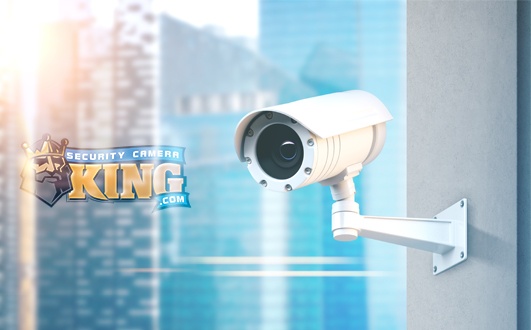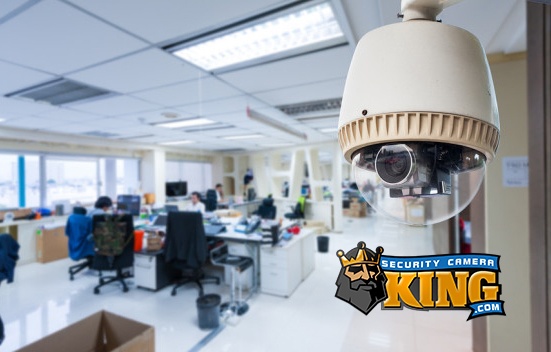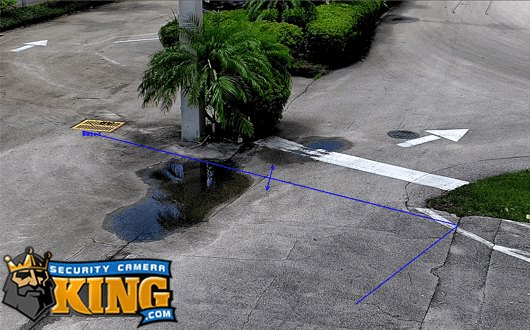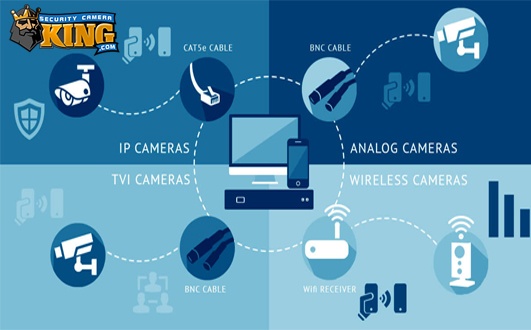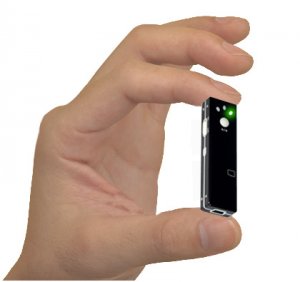 There are certain applications for surveillance and security where a “standard” Digital Video Recorder or DVR is just too large. For these applications the best choice is a micro DVR. Micro DVRs can be so small as to fit inside the casing of an ink pen. Let’s take a look at a digital video system that uses standard size DVRs first, and then take a look at micro DVRs.
There are certain applications for surveillance and security where a “standard” Digital Video Recorder or DVR is just too large. For these applications the best choice is a micro DVR. Micro DVRs can be so small as to fit inside the casing of an ink pen. Let’s take a look at a digital video system that uses standard size DVRs first, and then take a look at micro DVRs.
A standard DVR is about the size of DVD player. The front of the DVR has buttons and switches to control the actions of the DVR. The back of the DVR is where all the connections are made to cameras and other items.
A typical DVR has space for at least one hard disk drive; some have room for 3 or more plus a CD/DVD writer. Like the camera, the DVR has Integrated Circuit (IC) chips dedicated solely to digital imaging. These chips are known as Digital Signal Processors or DSPs. Most standard DVRs these days also come with several other features that may or may not take up more space inside the DVR.
The DVR’s recording and storage unit is the “hard drive” also known as a Hard Digital Drive or HDD. This hard drive is a relatively large device when compare to things like IC chips. The hard drive contains magnetic plates that are written on by a magnetic head. Since the device is digital the only thing the disk contains is a series of 0s and 1s.
The hard drive actually spins the platters (disks) usually about 7200 RPM while the magnetic head does the writing. These are great for storing large amounts of data. However they are very intricate as well. The space between the magnetic head and the platter is less than that of the thickness of a human hair. This typically means that these devices are very sensitive and were not designed to take a lot bumping, vibrating, and the like.
In contrast, micro DVRs are very small. There are no moving parts on a micro DVR. That’s because micro DVRs use RAM (Random Access Memory) memory instead. There are no moving parts on micro DVR because they do use RAM type memory. The data is saved on RAM which has no moving parts.
This used to make micro DVRs nearly impossible to own because of the incredibly expensive RAM memory storage devices that include SD cards, Flash thumb drives, mini SDs, etc. However, great strides have been made in RAM memory technology and today it is not cost prohibitive to purchase an SD card with 8 gigabytes of storage room.
In addition, video images can be incredibly large. That’s because a video image is really nothing more than a digital picture taken many times in succession in a short period of time. Typically, smooth video is obtained by taking from 15 to 30 pictures a second. Let’s consider how much memory would be needed for just one hour of uncompressed video. Most photographs these days run about 1 megabyte in size so will use this figure for our calculation:
1 MB (per picture) X 30 pictures (also called frames) per second X 60 seconds in 1 minute X 60 Minutes = 108,000 MB for one hour of video
However technology has also greatly improved in another area as well. In addition to storage the micro DVR and even a standard DVR normally compress the files by using a CODEC (COmpression/DECompression) utility. A CODEC shrinks the size of the video file while maintaining high quality of the video itself. It does this by using special mini programs called algorithms that save space by not repeating the same objects. For example, if a picture is taken of a football game with the sky in the back ground, the sky usually doesn’t change it’s appearance much. A CODEC only saves information for the sky one time there fore reducing the overall size of the video image.
Micro DVRs take advantage of this as much as possible to extend their recording times on the portable recording media.
Where are micro DVRs used? You’ll most likely find micro DVRs on all small specialty cameras such as hidden or disguised cameras. Some of these camera are so small they do not have the option of saving their data on portable media that can be removed and replaced. These cameras usually have a USB patch cord that they connect to almost any computer to download their files so they can be watched on the computer.








